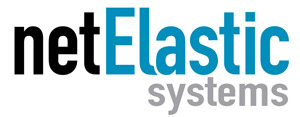The telecom world is experiencing tremendous change, with software playing a greater and more strategic role in virtually every aspect of operator networks. In fact, AT&T recently announced they’re close to “virtualizing” 75% of their network functions, which is an amazing fact.
This transformation is also taking place with broadband network gateways (BNGs or BRAS), which are the network edge aggregation point used by subscribers to access their Internet Service Provider (ISP) network. Traditionally, the BNG function resided in physical edge routers built by major router manufacturers. Unfortunately, these legacy BNGs are “closed systems” that lock carriers into proprietary hardware and software, which are expensive, inflexible, and difficult to scale.
These same router manufacturers have all released virtualized, software-only versions of router functions, including virtual BNGs. However, the router manufacturers still want to protect their lucrative hardware margins, even when selling software.
A true software-based BNG offers the best option for forward-looking service providers. Given that, what are the most important things to look for when evaluating potential Virtual BNGs?
Product Innovation AND Reliability

New technology and products sometimes come with new challenges, such as product reliability issues. This is a particular concern with new software which isn’t production-ready.
netElastic was one of the first companies to offer a Virtual BNG, and from the start has been committed to incorporating the voice of the customer into its technology and products. In developing vBNG, netElastic worked with eight of the top twenty carriers worldwide (and many smaller carriers) to provide input on vBNG proof-of-concepts and trials. Today, when adding new vBNG features or capabilities, netElastic continually measures customer value as the key factor.
Unlike most companies that sell vBNG, netElastic has over 40 engineers dedicated to vBNG. This breadth and depth of knowledge and experience enables netElastic to bring both innovation and product reliability to service providers.
Network Scalability
Many people talk about network scalability. But what does it really mean?

A scalable network can handle current demand and can also expand to meet future demand without having to redesign the network. In summary, scalability is the ability to scale or expand your network to accommodate future growth.
In contrast, limited scalability means there are limitations on network growth before a carrier has to engage in significant network redesigns and investments. Unfortunately, many legacy hardware-based BNGs offer limited scalability.
In addition, residential subscribers are continually demanding new, more customized advanced services. This is particularly challenging for service providers that depend on traditional, hardware-based BNGs to manage subscriber sessions and authentication.
Seamless Scalability
netElastic Virtual BNG uses software-defined networking (SDN) technology to deliver market-leading scalability and flexibility with an optimized data plane and highly scalable design to support very small subscriber bases up to millions of subscribers. netElastic enables service providers to deliver new services faster, whether they’re deploying a new rural network or upgrading a large-scale metro POP.
vBNG also separates the data plane and control plane so each can be scaled independently, which provides the ability to dynamically adjust the network based on constantly changing demands. Both the control plane and data plane can scale up and down to meet performance needs, and they can run in different hosts to take advantage of CPU cores to maximize scalability and performance.
According to Tom Bishop, the Infrastructure Manager for Harbour ISP, “The performance, scalability, and stability of vBNG along with support from netElastic have been keys to our network success.” Harbour ISP has successfully expanded and grown their business with netElastic vBNGs that scale quickly and efficiently, and Harbour is now one of the fastest-growing ISPs in Australia.
Let’s Talk Performance
To meet the needs of next-generation networks, performance should be a key criteria when evaluating vBNGs. In this area, many vBNGs are lacking.
Intel and netElastic have been working closely to maximize vBNG performance and offer seamless scalability on Intel processors used in standard OEM and telecom equipment manufacturer (TEM) server designs. Recently, netElastic’s Virtual BNG and Intel’s XXV710 NIC with Dynamic Device Personalization (DDP) reached a new level of performance, in which data packets were forwarded at close to wire speed at 256 bytes on a single 25G port, while server performance reached 300 Gbps.
To learn more about vBNG scalability and performance, please download the Harbour ISP Case Study.

